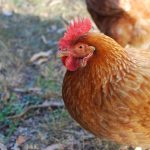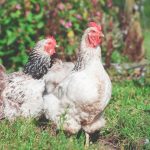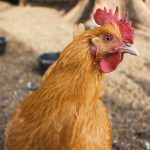Laying breeds are poultry varieties specifically developed for their high egg production capacity. These breeds are favored by commercial farmers and hobbyist poultry keepers due to their prolific egg-laying abilities and the quality of eggs they produce. Laying breeds exhibit diverse physical characteristics, including variations in size, plumage color, and temperament, allowing for suitable options in various farming environments.
The primary attribute of laying breeds is their capacity to produce eggs consistently throughout the year, making them valuable assets in poultry operations. Selecting an appropriate laying breed is crucial for success, whether the goal is to establish a small-scale egg business or maintain a reliable source of fresh eggs for personal consumption. This article will examine the traits of superior laying breeds, highlight the top three breeds for egg production, discuss important factors to consider when selecting laying breeds, provide guidance on optimizing egg production through proper care, and identify common pitfalls to avoid when raising laying breeds.
Table of Contents
- 1 Characteristics of the Best Laying Breeds
- 2 Top 3 Best Laying Breeds for Egg Production
- 3 Factors to Consider When Choosing Laying Breeds
- 4 Tips for Raising Laying Breeds for Maximum Egg Production
- 5 Common Mistakes to Avoid When Raising Laying Breeds
- 6 Conclusion and Final Thoughts on the Best Laying Breeds
- 7 FAQs
- 7.1 What are the best laying breeds of chickens?
- 7.2 How many eggs can I expect from the best laying breeds of chickens?
- 7.3 What are the characteristics of the best laying breeds of chickens?
- 7.4 Do the best laying breeds of chickens require special care?
- 7.5 At what age do the best laying breeds of chickens start laying eggs?
Key Takeaways
- Laying breeds are specifically bred for their ability to produce a high number of eggs.
- The best laying breeds are known for their high egg production, good temperament, and adaptability to various climates.
- The top 3 best laying breeds for egg production are the White Leghorn, Rhode Island Red, and Australorp.
- When choosing laying breeds, factors to consider include climate, space, and the purpose of egg production (personal use or commercial).
- Tips for raising laying breeds for maximum egg production include providing a balanced diet, proper housing, and regular health checks.
- Common mistakes to avoid when raising laying breeds include overcrowding, inadequate nutrition, and poor coop maintenance.
- In conclusion, the best laying breeds are those that meet the specific needs and preferences of the poultry farmer, and proper care and management are essential for maximizing egg production.
Characteristics of the Best Laying Breeds
Egg Production and Temperament
These breeds are renowned for their high egg production, often laying over 300 eggs per year. Additionally, they tend to have a docile and friendly temperament, making them easy to handle and care for.
Hardiness and Adaptability
The best laying breeds are typically hardy and adaptable, able to thrive in a variety of climates and environments. They also have the ability to start laying eggs at a young age, which is crucial for maximizing the overall output of eggs from a flock.
Maternal Instinct and Variety
Many of these breeds have a strong maternal instinct, making them excellent broody hens if you’re interested in hatching your own chicks. Furthermore, the best laying breeds come in a variety of colors and sizes, allowing you to choose the perfect fit for your specific needs and preferences.
Top 3 Best Laying Breeds for Egg Production

1. Leghorn: The Leghorn is perhaps the most well-known laying breed, famous for its prolific egg production and distinctive white eggs. These birds are known for their high energy levels and excellent foraging abilities, making them well-suited for free-range environments.
Leghorns are also relatively small in size, making them an ideal choice for backyard flocks with limited space. 2. Rhode Island Red: The Rhode Island Red is a popular dual-purpose breed known for its excellent egg production and meat quality.
These birds are known for their hardiness and adaptability, able to thrive in a variety of climates. Rhode Island Reds are also known for their calm and friendly temperament, making them a great choice for families with children. 3.
Australorp: The Australorp is an Australian breed known for its exceptional egg-laying abilities, often producing over 300 eggs per year. These birds are also known for their gentle and docile nature, making them easy to handle and care for. Australorps are also relatively large in size, making them a good choice for those looking for a dual-purpose breed that can also provide meat.
Factors to Consider When Choosing Laying Breeds
When choosing laying breeds for your farm or backyard flock, there are several important factors to consider. First and foremost, it is important to consider your specific needs and goals. Are you looking for a breed that excels in egg production, or are you interested in a dual-purpose breed that can also provide meat?
Additionally, consider the climate and environment in which you live, as some breeds are better suited for cold or hot climates. It is also important to consider the space available for your flock, as some breeds require more room to roam than others. Additionally, consider the temperament of the breed, especially if you have children or other animals on your property.
Finally, consider the availability of the breed in your area, as some breeds may be more difficult to find than others.
Tips for Raising Laying Breeds for Maximum Egg Production
1. Provide a balanced diet: A balanced diet is essential for maximizing egg production in laying breeds. Ensure that your birds have access to high-quality feed that is specifically formulated for laying hens.
Additionally, provide access to fresh water at all times, as dehydration can negatively impact egg production. 2. Provide adequate space: Laying breeds require adequate space to move around and engage in natural behaviors such as scratching and dust bathing.
Overcrowding can lead to stress and reduced egg production, so be sure to provide enough space for your flock to thrive. 3. Minimize stress: Stress can have a significant impact on egg production in laying breeds.
Minimize stress by providing a calm and quiet environment, handling birds gently, and avoiding sudden changes in routine or environment. 4. Monitor health: Regular health checks are essential for maintaining optimal egg production in laying breeds.
Keep an eye out for signs of illness or injury, and address any issues promptly to ensure the overall health and well-being of your flock.
Common Mistakes to Avoid When Raising Laying Breeds

Neglecting Nutrition
A balanced diet is crucial for maximizing egg production in laying breeds. Neglecting nutrition can lead to poor egg quality and reduced overall output. Ensure your hens receive a well-rounded diet that meets their nutritional needs.
Overcrowding and Stress
Overcrowding can lead to stress, which can significantly reduce egg production in laying breeds. It’s essential to provide adequate space for your flock to thrive, allowing them to move freely and engage in natural behaviors.
Health Issues and Inadequate Housing
Ignoring health issues can have a significant impact on egg production, while inadequate housing can lead to stress and reduced egg production. Regular health checks are vital for maintaining optimal productivity, and providing a clean, comfortable, and well-ventilated environment is essential for your flock’s overall well-being.
Conclusion and Final Thoughts on the Best Laying Breeds
In conclusion, choosing the right laying breed is essential for maximizing egg production on your farm or in your backyard flock. The best laying breeds share several key characteristics, including high egg production, docile temperament, adaptability, early onset of lay, and a variety of colors and sizes. When choosing laying breeds, it is important to consider factors such as your specific needs and goals, climate and environment, space available, temperament of the breed, and availability in your area.
By following tips such as providing a balanced diet, adequate space, minimizing stress, and monitoring health, you can raise laying breeds for maximum egg production. Additionally, it is important to avoid common mistakes such as neglecting nutrition, overcrowding, ignoring health issues, and inadequate housing. With careful consideration and proper care, you can enjoy a bountiful supply of fresh eggs from your laying flock while enjoying the company of these productive and delightful birds.
If you’re interested in learning more about the best laying breeds of chickens, you might also want to check out this article on The Chicken Coop Country Diner. This article provides valuable information on how to properly care for and feed your chickens to ensure they are healthy and productive layers.
FAQs
What are the best laying breeds of chickens?
Some of the best laying breeds of chickens include the White Leghorn, Rhode Island Red, Plymouth Rock, and Sussex.
How many eggs can I expect from the best laying breeds of chickens?
On average, the best laying breeds of chickens can produce between 250 to 300 eggs per year, depending on factors such as diet, environment, and genetics.
What are the characteristics of the best laying breeds of chickens?
The best laying breeds of chickens are known for their high egg production, good temperament, and hardiness. They are also typically good foragers and can adapt well to various climates.
Do the best laying breeds of chickens require special care?
While the best laying breeds of chickens do not require special care, they do benefit from a balanced diet, access to clean water, and a comfortable living environment to maximize their egg production.
At what age do the best laying breeds of chickens start laying eggs?
The best laying breeds of chickens typically start laying eggs at around 5 to 6 months of age, although this can vary depending on the individual bird and its environment.
Meet Walter, the feathered-friend fanatic of Florida! Nestled in the sunshine state, Walter struts through life with his feathered companions, clucking his way to happiness. With a coop that’s fancier than a five-star hotel, he’s the Don Juan of the chicken world. When he’s not teaching his hens to do the cha-cha, you’ll find him in a heated debate with his prized rooster, Sir Clucks-a-Lot. Walter’s poultry passion is no yolk; he’s the sunny-side-up guy you never knew you needed in your flock of friends!







